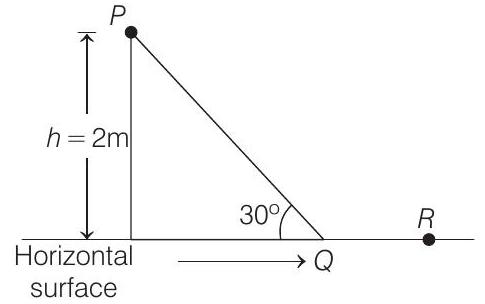Work Power and Energy 3 Question 1
1. A point particle of mass
(2016 Main)

(a) 0.2 and
(b) 0.2 and
(c) 0.29 and
(d) 0.29 and
The block
(a) 4
(b) 2
(c)
(d)
Show Answer
Answer:
Correct Answer: 1. (c)
Solution:
- As energy loss is same, thus
Further,decrease in potential energy






